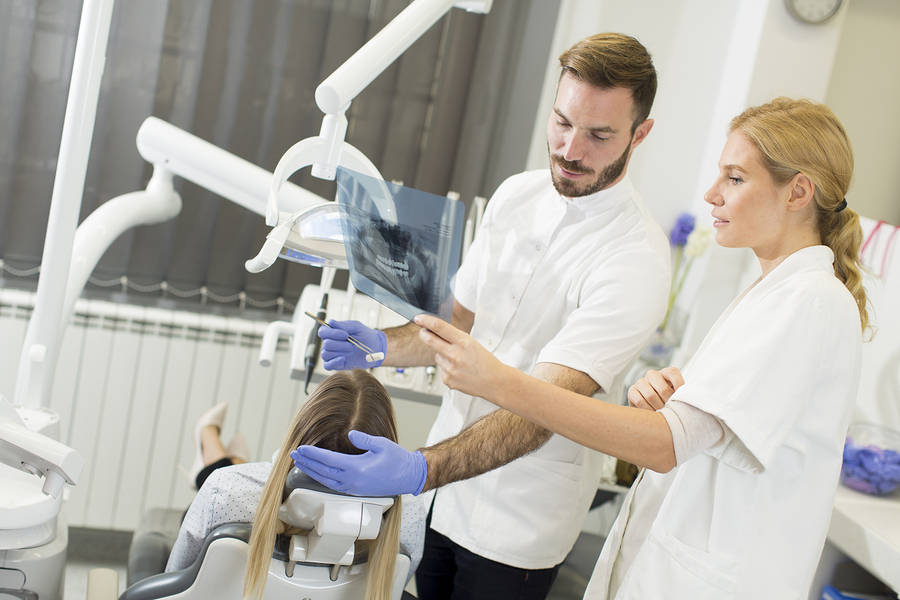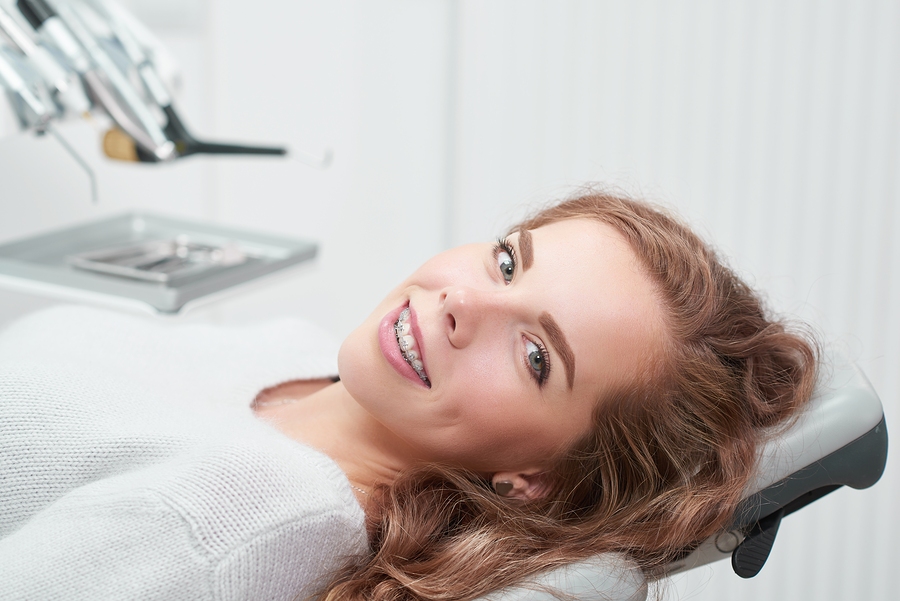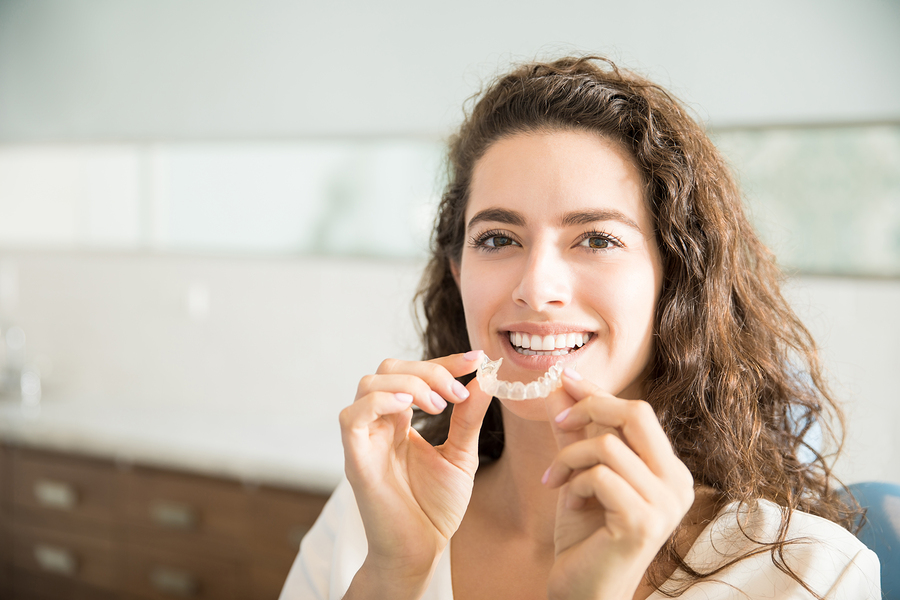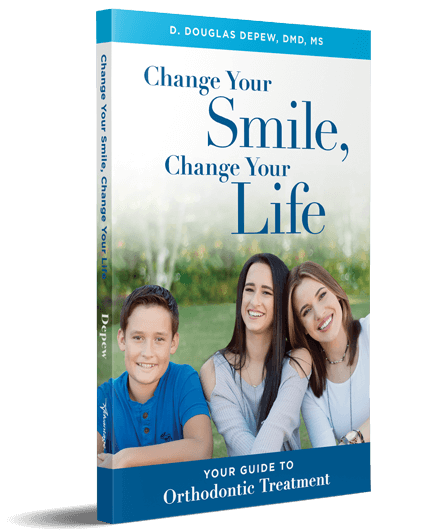Category: Uncategorized

The Value of Orthodontics
A healthy smile is even better than a car or a house, do you know why? Because unlike a house or a car, a healthy smile is an asset that can last the rest of your life. Feeling confident in your healthy smile is good for your oral health, increases your self-esteem, and improves your professional and personal opportunities in life, too. An investment in necessary orthodontic treatment is not just an investment in your smile but in yourself and your future.
As with any investment, you have to do your homework first. When it comes to orthodontics, making sure you get the right kind of orthodontic treatment from a qualified and experienced professional is key to getting great results.
Would You Trust Your Family Doctor to Perform Your Heart Surgery?
Let’s say you went for your annual physical with the GP you’ve seen and trusted for years. At the end of that visit, your GP told you that you needed heart surgery stat. Better yet, they’d be able to perform that heart surgery for less than what the cardiothoracic surgeon down the hall charges. What would you think?
I bet you’d be skeptical. You’d wonder why a general practitioner was talking about performing heart surgery instead of referring you to a specialist. No matter how much you liked and trusted your GP, you would not take the plunge and let them perform heart surgery on you (even for a great price).
It’s the same with dentistry and orthodontics. While many dentists offer orthodontic treatment to their patients, they’re like the GP above – fantastic at what they do, but not able to provide the same level of care as someone trained in a specialty.
The Importance of Specialization
Orthodontists are dentists who have continued their training and studied orthodontics exclusively for two to three years after dental school. They then enter the field focusing on providing orthodontic care only to their patients, rather than things like fillings and crowns, which quickly builds up their hands-on experience in the field. They study the latest in orthodontics to earn their continuing education credits as long as they practice.
In short, they know orthodontics inside and out in a way that a general dentist simply is not able to. This means they’re able to provide care that a general dentist isn’t able to provide.
Take Tom. He was 38 years old when he came to see me, unhappy with his teeth. Two years earlier, he’d started a system of clear aligners to straighten his teeth under the supervision of his dentist, who said that treatment would take eight months. Yet two years on, Tom had the same issue. That’s because his dentists saw crooked teeth and tried to fix that problem. But the real problem was more complex – an underbite, a narrow palate, and crowding. As an orthodontist, I was able to recognize these issues with Tom’s bite that his dentist had missed and come up with a treatment plan that addressed them. Ultimately, Tom needed braces and jaw surgery for optimal oral health.
The Person Behind the Appliance
“A tool is only as good as the person using it.” Perhaps you’ve heard this saying before. It means that you can’t trust a tool to get the job done all on its own; it needs someone who understands how the tool works, and how the problem should be fixed, for it to work right.
In the same way, it’s not the braces that straighten teeth on their own. They work because the specialist who put them on understands how braces work, how teeth move, and in what way teeth need to move to solve existing problems with the teeth, palate, bite, and jaw. Again, an orthodontist, who has studied these issues for years, is in the best position to do this.
Trust a Specialist
An orthodontist with ample experience and a great reputation should be the only person you allow to provide orthodontic treatment. Remember that the changes don’t just affect your teeth but your self-confidence, professional life, and personal life. Your smile is so important – don’t trust it to anyone but an expert.

Time and Money-Saving Staff Training Solutions
Highly trained assistants are key to a successful orthodontic practice. Yet training can be a big expense of time and money that when not done right. Here are a few simple things to do to save time and money on training your orthodontic staff.
Commit to Training Staff – and Reduce Turnover
First, it’s important to make the commitment to maintaining a highly trained staff. Some practices cut staff training down to the minimum, not convinced that the time and money invested in training brings results.
But the latest technology and most cutting-edge products on the market only work their best when the people using them have the right skills. Since orthodontic assistants provide so much of the hands-on care in the practice, it’s important they have training to a high standard in order to give the patient a better outcome. Some practices settle for having their assistants shadow someone with a little experience, but this isn’t enough; they should be trained and certified by the Academy of Orthodontic Assisting, which is recognized by the American Association of Orthodontists).
So how does committing to spending time and money on staff training save you time and money on staff training? Easy – by cutting down on turnover. Each time an assistant or other member of your staff leaves, you need to spend time and resources to recruit, interview, hire, and train a new employee. Training and development opportunities are directly tied to employee engagement and employee satisfaction which are tied to lower turnover. By committing to training your staff thoroughly and continuously, you’re investing in the long-term success of your practice.
Look Online for Efficiency and Consistency
For a long time, orthodontic assistants got their training on the job, as there were no other options. As I started my practice, I found that on-the-job training was not a good use of time and didn’t produce the best results. I wanted something more standardized, efficient, and effective.
Nowadays we have many options at our fingertips, with the Internet offering up training that can be done anywhere and anytime. It’s easier to keep track of individual staff members’ progress and you know that when they’ve finished the course, they’ve all learned the same information to the same standard.
Choosing web-based training is an efficient and consistent way to train staff that saves time and money by reducing lost productivity and helping staff get up to speed faster. It can also cut down on travel time and expenses, if you sent staff out of town for training, or instructor costs, if you brought trainers in-house.
(Full disclosure: I am the founder and academic director of Trapezio, an online program for training and certification of orthodontic staff. I developed it in the mid 1990s because I was frustrated with the lack of training options available, and over the years it’s grown and is now endorsed by the American Association of Orthodontists. It’s what I use to train all my staff and needless to say I am a big proponent of it.)
Evaluate and Audit Your Training Periodically
The biggest waste of time and money occurs when the training you’ve invested in isn’t hitting the mark. That’s why you must know what your goals are for any training program before you put any staff member through it, and you must know how to evaluate how effective it is once they’ve completed it.
If you see that a training program you’re spending money on, whether online or in person, isn’t yielding the real-life results you were expecting, nix it and find an alternative that does bring the results you want. Even if it costs more upfront, it’s a better value than training that provides no tangible return.
Training Encompasses the Whole Practice
Most of this blog has been specifically about training orthodontic assistants to do their job, but this advice goes for the other training in your office, too. Training for the whole staff can improve the patient experience, making for a more successful practice, and a safer, more pleasant work environment for everyone. Making the commitment to train every member of staff to do what they do to the highest standards will take your practice to the next level, and by turning to the Internet and periodically evaluating your training programs, you will save time and money in the long run.

Why Braces Work
We know what braces do – they move and straighten teeth – but do we know how they work? Yes, braces put force on teeth over time, causing them to shift position, but there’s more to it than that. Today we’re going to talk about exactly how and why braces work as well as they do.
How Brackets and Wires Work Together
Braces are a “fixed appliance,” meaning they are attached to the teeth and can’t be taken out by the patient like a removable retainer.
With traditional kinds of braces (that is, not Invisalign or other aligners), individual brackets are bonded to the surface of the teeth. These brackets vary in shape and size depending on the width, curvature, and desired angulation of each tooth.
Each bracket has a slot for the arch-wire, which stretches across the brackets from one side of the mouth to the other. There are different ways of keeping the wire attached to the bracket. Some braces rely on elastic ligatures, which are little rubber bands that come in many colors. Twisted steel ligatures can be used instead of elastic ligatures, which do the same thing but keep the wire in place even tighter. Other types of braces, called self-ligating braces, have a door or gate that hold the wire secure.
The arch-wire is the crucial part of the braces that provide the force to the teeth, causing them to move over time. It’s first shaped like the arch of the patient’s mouth before it’s attached to the brackets. This shape provides a track the teeth can move along to get into position. When the wire is placed in the mouth and attached to the brackets, it naturally picks up the shape of the misaligned teeth at first. After a while, though, as the body warms the wire up, the wire “remembers” and returns to its original shape, moving the teeth along with it.
Beyond Brackets and Wires
The description above shows how braces work at the most basic level. There are other things that help the brackets and wires do their jobs, including elastics and coil springs.
Elastic chains look like a strip of colored elastic circles. Each circle goes around a bracket and the elastic is stretched across multiple braces. These can be used to help close spaces between certain teeth or to move several teeth together as a group.
Elastics and rubber bands of varying sizes and strengths can be used to apply force, too. They often stretch between the lower and upper jaw to correct an overbite, underbite, or cross-bite. Rubber bands may be used throughout treatment but are especially common towards the end of treatment to help shape the final movements in the mouth.
Coil springs look like tiny metal springs and may be placed on or near the arch-wire. They are used to create space between teeth when, for example, space needs to be reserved for a future implant, or a canine tooth is blocked and needs space to come in between the two adjacent teeth.
Osteoclasts and Osteoblasts
If teeth stopped right at the gum line, it wouldn’t take so long to move them with braces. But the changes aren’t happening on the surface, they’re happening down below the surface in the bones of the jaw.
The force of the wire against the crown of the tooth is distributed into the root, which itself is embedded in bone in a sling called the periodontal ligament. The force on the tooth causes specialized cells called osteoclasts to dissolve bone on the side where the tooth is moving too, creating space for it. What happens to the newly made gap on the other side of the tooth, where it’s moved from? Specialized cells called osteoblasts create new bone on that side at the same time.
This process is called “remodeling” and takes around four to six weeks to complete. In the meantime, the tooth has moved a small distance. Then the process is repeated again, and again. This is why it takes several months for braces to work.
The Human Element
Another component of effective treatment with braces is the patient. It’s important for them to be an active part of their treatment and help get the best outcomes by taking care of their braces, avoiding foods that can damage their braces, wearing elastics as directed, and going to orthodontist appointments as scheduled. With the patient’s involvement, the braces can work their magic to create a healthy, beautiful smile.

Accelerated Treatment: Finding Results Fast
“When are my braces coming off?”
This question is a familiar one to any orthodontist. What patients want most is a beautiful smile, but they also want treatment to be as short as possible.
Why You Can’t Rush Braces
At our practice, all of our protocols and procedures are designed so that our patients don’t have to undergo treatment any longer than necessary. This has translated to current treatment times being six to eight months shorter than similar cases in the past.
Still, it takes time. To patients, it may feel like braces (and other orthodontic appliances) take a long time to work. But you have to remember that they have a big job to accomplish! Teeth are strong and are rooted in the bones of the mouth. Moving them takes force over time. Rushing the process can lead to problems such as root shortening or “hyalinization,” when the bone begins resisting movement.
For this process to be done right, it has to be done with precision and with an understanding of how the teeth and bone change during treatment. It can be sped up, but it can’t be rushed.
New Options to Speed Up Treatment Time
Fortunately, with the right tools and techniques, it is possible for many patients to shorten their treatment time by taking advantage of something called Regional Acceleratory Phenomenon (RAP) Effect. This works by manipulating the biology of tooth movement. When a bone is damaged, the body produces molecules called Cytokines that signal nearby cells to get to work. They tell Osteoblasts (bone-producing cells) and Osteoclasts (bone-dissolving cells) to start repairing and remodeling the affected area. By stimulating the release of cytokines through light, vibration, chemical injections, or minor surgery that cause controlled, deliberate trauma, we can speed up this process. Here are three methods that can be used to accelerate treatment time while maintaining excellent outcomes for patients:
Micro-Osteoperforations (MOPS)
RAP treatment in orthodontics is often accomplished with a minor surgical procedure done under local anesthetic in which small dimples are made in the surface of your bone between the roots of the teeth. It is done with a hand-held instrument placed through the gums and has been shown to be very effective at moving teeth more quickly.
Accelerated Osteogenic Orthodontics (AOO)
AOO is also very effective at reducing treatment time but is more invasive than RAP. A periodontist or oral surgeon performs this treatment, rather than an orthodontist, because it requires working directly on the bone that supports the teeth. It works by removing a small amount of the bone and making the bone softer temporarily, which allows for faster movement of teeth. (Although some bone matter is removed during the procedure, the bone remineralizes in the following months and ends up being just as strong as before.) Though very effective, this treatment is typically reserved for extreme and specific cases.
Noninvasive Methods
The previous two methods are effective but may be more invasive than some patients want. Luckily, there are new technologies on the market that also get good results without being invasive. The AcceleDent and the VPro5 are two examples. These are small handheld devices that the patient bites on for a period of time every day. They work by emitting small vibrations that induce microtrauma to stimulate a cytokine response, similar to RAP. Whether they shorten treatment time is still unknown, as they’re relatively new, but they show promise and they do have the added benefit of reducing pain after orthodontic appointments.
Shortening Treatment Time the Old-Fashioned Way
Even if you’re not interested in the methods described above or aren’t a good candidate for them, you can still keep treatment time on track by doing your part as a responsible patient. You’ll get better, faster results if you do what you’re supposed to do: brush and floss regularly, avoid foods that can harm your braces, go to all of your appointments, and use rubber bands or additional appliances as directed by your orthodontist.
On the other hand, if you are interested in techniques and tools such as the ones discussed here, talk to your orthodontist about your options. You may be surprised at what’s available and how soon you could see that smile you’ve been dreaming of.

The Role Relationships Play in Gaining Your Best Smile
What’s the most important thing when it comes to achieving the smile of your dreams? Is it the latest technology? The coziest orthodontic office? The most experienced support staff?
We believe all these things do make a difference to our patients, but above all, we believe that strong relationships are the most important throughout orthodontic treatment. When patients don’t like or trust their orthodontist, they are less likely to come to all their appointments and less likely to comply with their treatment plan. This can extend treatment time or even derail it altogether.
Treatment outcomes are simply better when there’s a strong relationship built on trust and good rapport between the patient and everyone in the practice. At Depew Orthodontics, we work hard to earn that trust and build that rapport because we genuinely care about our patients and we want them to have a great experience with us from start to finish.
Here’s how we build strong relationships with our patients.
Respecting Your Time
We believe a key component of developing a strong relationship built on trust is not wasting your time. At our practice, this starts with the first phone call, when you speak to one of our friendly Appointment Coordinators to discuss your concerns and ask any questions you have. We then send out a link via email to your inpatient forms which you can fill out at home, saving time when you come in for your first appointment. After evaluation and discussion at the first appointment, we’re often able to commence treatment right away, saving you the time and hassle of an additional visit.
Respecting your time also means that we give you the time you need to discuss your concerns and ask all the questions you have about treatment options, goals, and payment. We don’t rush our patients out the door. It’s important to us that you understand everything you’ll be doing throughout your treatment plan and why. By taking the time to listen and answer questions, we help our patients feel good about the their treatment. We want you to feel comfortable coming to us at any time with concerns.
Making It a Pleasant Experience
Not everyone loves going to the dentist and orthodontist. In fact, it’s unfortunately still a big fear for a lot of people. That’s why we strive to make our office as comfortable as possible, creating a home-like environment.
We also believe in treating our patients like family. It starts with a warm greeting at the front desk and continues through the appointment with every member of our friendly, dedicated staff. It also means that we respect our patients’ choices and understand their unique challenges. We suggest tailored treatment options for each of our patients to make sure you feel like one of our own family members. This is another way we build trust.
Providing the Best Treatment Possible
Orthodontics is an ever-changing field. New treatment options and technologies are being developed all the time. We pride ourselves on maintaining a modern practice with state-of-the-art technology to complement our many years of experience in patient care. Some of the more cutting-edge technologies we currently use include cone beam computed tomography, 3-D diagnostic intraoral scanner, digital x-rays, and 3D printing.
We don’t use these simply because they’re the newest, but because these technologies allow us to better diagnose underlying issues and put together a treatment plan that’s right for each patient. Our goal is always to provide treatment that’s as pain-free, fast, effective, and affordable as possible, because that’s what’s best for our patients.
Does Your Orthodontist Office Value Strong Relationships?
If you’re looking for an orthodontist and live in the area, we’d love for you to come visit us at Depew Orthodontics. If you’re not nearby, we encourage you to look for an orthodontist office that values building relationships with its patients the way that we do. You’ll not only have a better experience, you’ll have a better outcome: a life-changing new smile.

How Sleep Apnea Impacts Your Oral Health
Sleep disorders are common, with over 70 million Americans suffering from one of the 80+ varieties, according to the Cleveland Clinic. Sleep disturbances are not just an annoyance that cause daytime sleepiness, but serious health concerns that are associated with heart disease and a shortened life span.
One of the most common kinds of sleep disorders is sleep apnea, which affects approximately 20 million Americans. Sleep apnea has been linked to diabetes, stroke, systemic inflammation, rheumatoid arthritis, and more. It can also affect oral health in a number of ways.
Sleep Apnea Basics
Before we look at how sleep apnea can affect your oral health, let’s first look at what it is.
Sleep apnea describes a condition in which the breath is stopped multiple times during sleep. There are two main kinds, central and obstructive. (A third kind, mixed, is a combination of the two.) Central sleep apnea is less common than obstructive sleep apnea and is caused by problems with the signals coming from the brain to the muscles that control breathing.
Obstructive sleep apnea (OSA) is more common and is typically caused by obstruction of the upper airway, such as swollen nasal passages or soft tissue in the throat that collapses during sleep. This type of sleep apnea can often be successfully addressed with orthodontic intervention, while central sleep apnea cannot.
How Sleep Apnea Can Affect Your Oral Health
Tooth grinding
Grinding your teeth – also called bruxism – is a common symptom of sleep apnea. This is the main source of problems for oral health connected with sleep apnea. Many people who grind their teeth aren’t even aware of it, as it happens during sleep. Dentists look for telltale signs of grinding like worn-down tooth surfaces. Bruxism can lead to pain in the face, head, ear, and jaw joint (TMJ).
(Note that there are many other causes of tooth grinding, including stress and consumption of alcohol, cigarettes, and caffeine. No matter the cause, tooth grinding can do damage, so talk to your dentist if you suspect that you grind your teeth.)
Problems with the teeth
Due to intense forces it causes, tooth grinding can lead to broken teeth and dislodged fillings. Plus, as the hard enamel layer wears down over time, teeth become more susceptible to decay, leading to cavities and potential infection.
Gum inflammation and gum disease
Tooth grinding can also cause the gums to recede over time, leading to inflammation of the gums (gingivitis) or gum disease (periodontitis). Gingivitis can be reversed fairly easily with good attention to brushing and flossing, but if not caught in time can progress to periodontitis, which itself can lead to bleeding gums, tooth loss, and infection. It’s a serious condition that needs to be addressed by a professional.
Orthodontic Treatments Available
If you are diagnosed with OSA, you have many options for treatment, including the use of a continuous positive airway pressure (CPAP) machine, which is typically the first line of treatment. While it’s highly effective, the downside of the CPAP machine is that many people find it uncomfortable and difficult, if not impossible, to use night after night.
Fortunately, there are orthodontic alternatives to the CPAP machine worth exploring that can address sleep disorders in both children and adults, including expanders and nighttime appliances. These treatments work because they improve airflow through the airway so the breath is not interrupted during sleep, and compliance is typically much higher than with CPAP machines.
Don’t Ignore Sleep Disorders, Treat Them
Sleep is a crucial part of health. If your sleep is routinely disturbed, speak to your doctor about undergoing a sleep study so you can get a diagnosis and start seeking treatment. Depending on your diagnosis, you may also want to speak to your dentist or orthodontist about treatment. At our practice, we evaluate patients who come to us with sleep disorders and offer customized solutions. The results can be life-changing.
Sources:
https://my.clevelandclinic.org/health/articles/11429-common-sleep-disorders
https://www.sleepapnea.org/learn/sleep-apnea-information-clinicians/

The Hazards of “Do-It-Yourself” Dental Treatments
Some things are perfectly fine for “do-it-yourself” if you have the skill, like replacing kitchen countertops, fixing a clogged sink, or changing your car’s oil. Other things, like dentistry, are not meant for DIY. Unfortunately, more people are choosing the DIY route when it comes to straightening their teeth.
The internet is responsible for this. Now people can find instructional videos and blogs promising quick fixes to common orthodontic problems. Several companies sell clear aligners to straighten teeth directly to consumers. What’s missing from all of these treatment options is the oversight of a knowledgeable and experienced professional.
For many people, this can add up to unintended consequences of DIY dentistry. When it goes wrong – and it often does – the results are bad. Here’s what can happen if you decide to play dentist with your own smile.
Unintended Consequences of DIY Dentistry
One common DIY treatment for crooked teeth is aligners that you can buy on the internet. First, you need to take an accurate impression of your teeth, which is challenging. Then you receive a series of clear aligners in the mail intended to take your teeth from where they are now to where you want them to be.
But moving teeth is complicated. (If it weren’t, orthodontists wouldn’t spend years of their professional life studying it!) Problems can arise even in the best of circumstances, and they’re much more common with DIY. For instance, if there’s not enough room in the mouth, teeth will shift to make room for other teeth that are moving, which can lead to crooked teeth. It’s even possible to move teeth right out of the bone. You don’t need to be a dental professional to know that’s a bad thing.
In some cases, DIY dental treatment can lead to the permanent loss of teeth. There’s a video online that shows you how to close a gap in between the front teeth with a little rubber band. What the video doesn’t explain is how that small rubber band can ride up and up and up along the tooth, under the gums, and eventually up the roots of the teeth. This can put pressure on the bone holding the teeth, leading to tooth loss.
These are just a few examples of what can happen when you choose to treat your own orthodontic issues. The takeaway is that by trying to fix one problem, you can end up with many more.
Understanding “Cost” Versus “Value”
With all the risks to DIY dentistry, why do so many people do it? The answer is simple: money. These “solutions” are appealing because they’re free or inexpensive compared with traditional orthodontics costs.
However, it’s important to understand the difference between cost and value. Cost is how much you pay. Value is what you get. You may pay $0 but end up with terrible results, meaning the cost is great but the value is terrible. Conversely, you may pay more for something but get exactly what you want. Here, the value is high because the quality is high compared to the cost. Orthodontic treatment that leaves you with a beautiful, healthy smile to last a lifetime can be the best value you ever find.
If you’ve considered DIY dental treatments, please simply talk to an orthodontist first. Don’t avoid the orthodontist because you assume you can’t afford treatment; you may be surprised to find out what your options are. Many orthodontists, including me, make it a priority to offer their patients affordable treatment. At my practice, we work with families to set up flexible payment arrangements that make it possible for them to get the treatment they need.
Having orthodontic treatment under the supervision of a specialist is a must. If you value your smile, don’t trust it in the hands of anyone other than an experienced professional – including yourself.

Wisdom Teeth Woes
Why are they called “wisdom teeth”? Because they appear so much later than other teeth, usually coming in between 17-25 – when one is (supposedly) wiser.
This third set of molars, which appear in the very back of the mouth beyond the other two sets of molars, are considered vestigial, a holdover from a time when our ancestors needed to grind down plant tissue for food. Since our diet has changed, we don’t really need wisdom teeth anymore, but most of us still have them. (Though up to 35% of people are missing at least one wisdom tooth, and some people have none at all.)
These days, wisdom teeth may be nothing more than a pain to people who do have them, as up to 85% of people with wisdom teeth will eventually need them removed. Dentists recommend they be extracted because if left alone, they can cause some big problems, including the following.
When They Don’t Come In: Impacted Wisdom Teeth
Impacted teeth are fully or partially stuck under the gum line, unable to emerge into the mouth on their own. Partially impacted wisdom teeth can lead to significant infections as food and germs become trapped under the gums. The most common teeth to be impacted are the wisdom teeth, due to their position in the back of the mouth. An impacted tooth is a problem because it can lead to significant pain, swelling, and even infection if left untreated.
A dentist or orthodontist can see where your wisdom teeth are by taking X-rays, which show how impacted they are and give an idea of how difficult an extraction will be. Depending on positioning, some are easier to extract than others.
When They Come in Wrong: Angled Wisdom Teeth
Not all wisdom teeth are impacted. The problem is that for many people, even if the wisdom teeth do come in on their own, there’s simply not enough room in the jaw to accommodate them. That can lead to problems.
Wisdom teeth that are not impacted may break through the gum line and start to come in but at an angle, pointing in or out of the mouth, towards the second molar or away from it, even completely horizontal. This misalignment means the bite will be off and the wisdom teeth won’t be functional for biting and chewing. It can also lead to damage of the jawbone, nerves, and neighboring teeth.
When They Push Other Teeth Forward: Relapse
Another issue is “relapse,” where teeth that have already been straightened are pushed out of place by wisdom teeth erupting and putting forward pressure on the rest of the teeth. Remember that wisdom teeth are the last to come in, and they may not come in until years after braces and other orthodontic treatment have been completed.
Some dentists and orthodontists believe this is a problem, while others say that it isn’t, since teeth tend to move towards the front of the mouth anyway.
Wisdom Teeth: To Keep or Remove?
If your wisdom teeth are not impacted, are coming in fine on their own, and there’s space in your mouth to accommodate them, then your dentist or orthodontist may not recommend they be removed. If they are recommended for extraction, now you understand why. Although extraction might be uncomfortable at the time, it can save a lot of pain and problems later. Talk to your dentist or orthodontist if you have any concerns about your wisdom teeth and make a plan that’s best for you.

What Is Your Oral Health Worth to You
Have you ever asked yourself what your oral health is worth to you? Even if you can’t put a dollar amount on it, I bet you’d say it’s worth a lot. Like other aspects of health, oral health is one you want to invest in, because the results you end up with do matter.
That’s why I urge people considering orthodontic treatment for themselves or their child not to choose an orthodontist’s office on price alone. When you realize how much oral health is worth to you and your family members, you begin to understand how value and quality come into the picture when it comes to orthodontic care.
Paying for Quality
Yes, it’s sometimes possible to get what seems like a great bargain, but more often than not, you get what you pay for. This is true when it comes to orthodontic care.
The difference in treatment between orthodontists can be substantial, and that difference is usually reflected in the cost of treatment. After all, all orthodontists know the value of their treatment. Orthodontists’ office can vary in many significant ways, including:
- Which treatments are provided
- The quality of the materials used
- How new (or old) the technology and equipment is
- The training and certification of assistants
- The friendliness and competence of front desk staff
- The techniques the orthodontist has trained in
- How experienced the orthodontist is
…And I could go on. Orthodontists may all have the same initials after our names and the same professional degree under our belts, but as in every profession you’ll find a wide variety of experience and skill between providers. If you want more personalized care, higher skill, and better outcomes, you should expect to pay a bit more.
Or Paying for Mistakes
I don’t want to scaremonger and I don’t want to talk negatively about any of my fellow orthodontists, but I do want to be honest. Unfortunately, sometimes by choosing the cheapest option in orthodontic care, you get what you pay for – and in this case, that can be a very bad thing.
For starters, a lower cost orthodontist may not offer you the latest treatment plans because they don’t have the latest techniques or the know-how to do so. They may use cheaper materials to save money that can end up breaking or malfunctioning, extending treatment time and requiring more office visits from you. Worst case scenario, you could complete treatment only to find years later that the treatment wasn’t done correctly, or was the wrong treatment plan to begin with, and have to go through (and pay for) orthodontic treatment all over again. These are just a few examples of what can happen when you choose an orthodontist primarily on price. In many cases these corner cutting methods are dictated by the orthodontist’s corporate employer…the doctor has little control.
Again, my purpose here is not to warn you away from orthodontists, just to encourage you to think about the quality of the care you’re getting, and understand it’s an investment. The cheapest option seem be nice in the short-term, but it may be detrimental to the experience and the outcome you receive in the long run.
Can You Put a Price on a Beautiful Smile?
Having seen the results of orthodontics first-hand in thousands of patients, I know that having a great smile is priceless. Great orthodontic treatment does more than change your teeth, it changes your life.
Numerous studies have shown that a smile is very important when it comes to other people’s perceptions of us. They may believe we are more confident, more successful, more attractive, more likely to date, more likely to get the job we’re after, and have better hygiene, than someone with an unhealthy or unattractive smile.
That doesn’t even compare to the perception we have of ourselves when we look in the mirror with a brand-new smile. Seeing a beautiful smile beaming back for the first time is an incredible moment. It’s the start of new-found self-esteem and self-confidence that changes how we interact with the world. It can change lives professionally and personally. And it’s a lifelong change.
It’s Not About Cost, It’s About Value
As Oscar Wilde said, one can know “the cost of everything and the value of nothing.” Cost is how much you pay for something. Value is what you get for what you pay. Fewer, shorter, and more pleasant visits along with shorter overall treatment time, and a better result are all things that add to the value of your treatment. If your oral health and your smile are worth something to you (and I’m guessing they are) then you owe it to yourself and to your family to work with a professional who can give you the best treatment and outcomes possible. When you start your search for an orthodontist, look beyond the fees to outcomes and experience. Remember, it’s an investment in your life and your future.

Life After Braces
The day everyone with braces awaits – the day the braces come off!
Life after braces is a great thing. You can enjoy things that were difficult during treatment (like corn on the cob and chewing gum), you don’t have to fuss with rubber bands and cleaning in between the wires and brackets, and, best of all, you can show off your new smile.
Just because the braces come off, however, that doesn’t mean treatment is over. Teeth have a good memory and if left alone, they can drift back to their original spots, undoing the progress you’ve made over treatment. This is called post-treatment relapse. It needs to be addressed in life after braces. We do that with retainers.
Retainers
Your orthodontist will most likely want you to wear a retainer after the braces come off. It is crucial, when living life after braces, to follow their instructions on how long and how often to wear your retainer, because being lax with retainers can allow the teeth to move. The longer you wear your retainer, the higher the chance that your teeth will stay in place. It’s that simple.
There are two types of retainers, removable and fixed, each with their pros and cons. Your orthodontist will make a recommendation on which is best for you based on your circumstances and their experience. You may have one or the other, or you may use both.
Removable retainers
These retainers can be taken out by the patient. They are typically made of acrylic and wire (the “classic” retainer) or clear plastic.
With today’s technology, we don’t have to take a plaster cast of the patient’s teeth and then wait a week or two for an outside lab to create it. Instead, we can use 3D scanners and printers to design and create plastic retainers in-house. This is not only very cool, but it allows us to give the patient their retainer in the same appointment as braces removal. This saves an extra appointment and lets the patient start wearing the retainer sooner.
PROS: Removable retainers can be taken out by the patient for eating, brushing, flossing, and cleaning.
CONS: Removable retainers can easily be lost, discarded accidentally, or eaten by the family dog (this happens more often than you’d think). They can be destroyed if not handled properly and may degrade with rigorous cleaning. Clear retainers are not ideal for people who grind their teeth, as the grinding causes damage.
The biggest con of all: It only works when it’s in your mouth. If you don’t adhere to the orthodontist’s treatment plan and wear it for the number of hours in the day recommended, it won’t be completely effective.
Fixed retainers
These retainers cannot be taken out by the patient. They are wires bonded to the back of two, four, or six teeth to keep them in place. They usually last a very long time but they can break (that is, the bond between the wire and the tooth can fail), in which case a trip to the orthodontist or dentist is required ASAP to prevent teeth from moving.
PROS: Fixed retainers work 24/7/365; since there’s no option of removing them, they are very effective at keeping the teeth in place. Also, because they are bonded to the back of the teeth, they are completely hidden.
CONS: It can be time-consuming to floss with fixed retainers, as the wire is typically bonded to the back of each tooth, requiring the use of a floss threader to properly floss all the teeth. Also, it’s smart to be careful about foods you eat; crunch and sticky foods can lead to the fixed retainer breaking off.
Cause for Celebration
At my practice, we have a big celebration for patients when the braces come off. The staff and patient’s family members gather around and sing a celebration song, we present some candy or other food that was off-limits during treatment plus a certificate marking the occasion, and we finish it off with cheers as the patient leaves the office. It’s a fun way to celebrate with the patient as they start a new chapter in their lives.
Though it’s a big day, it’s not the end of treatment. Remember that braces got you that beautiful smile, but it’s up to you (and your retainers) to make sure it stays that way!

